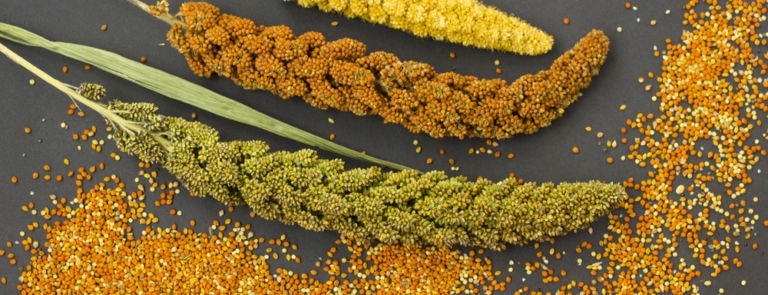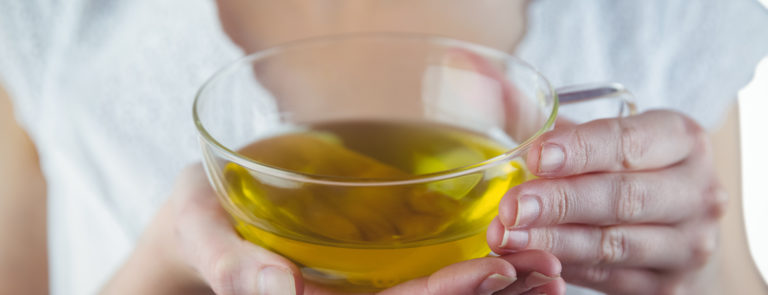15% off €25
Code:BASKET
Your guide to millet: nutrition, benefits & risks

Millet is a great source of nutrients, whether it's foxtail millet, pearl or kodo. We explore everything you need to know, including benefits and risks.
Summary
1Different types of millet
There are a few different types of millet which are available, each with a slightly different nutritional profile...
2Benefits of eating millet
Millet is rich in a number of vitamins and minerals, which means that there are many health benefits to including this little powerhouse in your diet.
3Risks of eating millet
Despite all the benefits of eating millet, there is a downside. Millet contains antinutrients, which can block or reduce the absorption of other...
Millet is an ancient seed that actually belongs to the grass family. Originating in Africa and northern China, it is a staple food in the diets of around a third of the planet’s population.1 Millet has become popular in recent years because of its nutritional profile. It is high in protein, fibre and antioxidants and it is also gluten-free.2
Millet is available to buy as puffed millet, millet flakes or hulled millet, all of which have had the hard indigestible cover of the grain removed. Hulled millet is a good alternative to foods such as rice and quinoa. Puffed millet can even be eaten as a breakfast cereal. Millet flakes can be used in cereal as well as baking in gluten-free recipes.
Here we explore everything there is to know about millet including its nutritional profile, benefits and risks.
Different types of millet
There are a few different types of millet which are available, each with a slightly different nutritional profile:
- Foxtail millet: Foxtail millet is a tiny seed which is light yellow in colour.3 It can be eaten as an alternative to rice in stir-fries and as an accompaniment to curries. Every 100g portion of foxtail millet contains 11.2g of protein and 6.7g of fibre.4 Both protein and fibre are essential in our diets. Including foxtail millet in your dinner helps to keep you feeling fuller for longer, making it easier to resist an after-dinner snack!
- Finger millet: Finger millet is used as an alternative to wheat or other grains when making bread and cereal. Finger millet is an excellent source of potassium. Potassium is important for a number of processes in the body. It helps the nerves and muscles to communicate with each other, supports cell exchange and assists with the normal functioning of the heart.5
- Pearl millet: Pearl millet, or bulrush millet as it is sometimes known, is a small grain tropical cereal grass. It is the most cultivated millet, with over 14 million tonnes of it produced annually.6 It is also the most common type of millet that you can buy. Pearl millet is an excellent source of protein, carbohydrates and fibre. It is also rich in vitamins and minerals, including magnesium, phosphorus and zinc.7 Zinc helps to produce proteins and DNA as well as helping the immune system to fight off bacteria and viruses.8
- Barnyard millet: is a wild seed which is mainly grown in India. It is a fast-growing crop which can produce ripe grains within 45 days of being sown.9 Barnyard millet is low in calories whilst being rich in fibre and iron. The human body uses iron for growth and development. Iron is used to make haemoglobin, which carries oxygen from the lungs to all the other parts of the body.10
- Kodo millet: Kodo millet was first discovered in India around 3000 years ago. The millet grains vary in colour from light red to a dark grey hue. Kodo millet is very high in dietary fibre and is a good source of vitamins including vitamin B6, folic acid and minerals such as calcium, iron and magnesium.
Benefits of eating millet
Millet is rich in a number of vitamins and minerals, which means that there are many health benefits to including this little powerhouse in your diet.
Millet is rich in molecules, including ferulic acid and catechins. These work as antioxidants and help to protect the body from oxidative stress, which can cause damage to the cells.11
If you have celiac disease or you are following a gluten-free diet, then millet is a good choice for a gluten-free grain.12
Millet is very rich in fibre which helps to support a healthy digestive system. This helps to prevent issues like diarrhoea and flatulence and supports healthy gut flora.13
Risks of eating millet
Despite all the benefits of eating millet, there is a downside. Millet contains antinutrients, which can block or reduce the absorption of other nutrients in the body. This can end up leading to deficiencies.14 People who otherwise eat a healthy balanced diet are unlikely to feel any adverse effects from this. You can also reduce the antinutrient content of millet by soaking it at room temperature overnight, and then draining and rinsing before cooking.15



